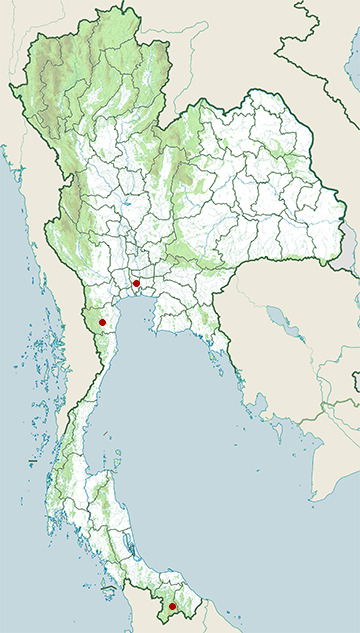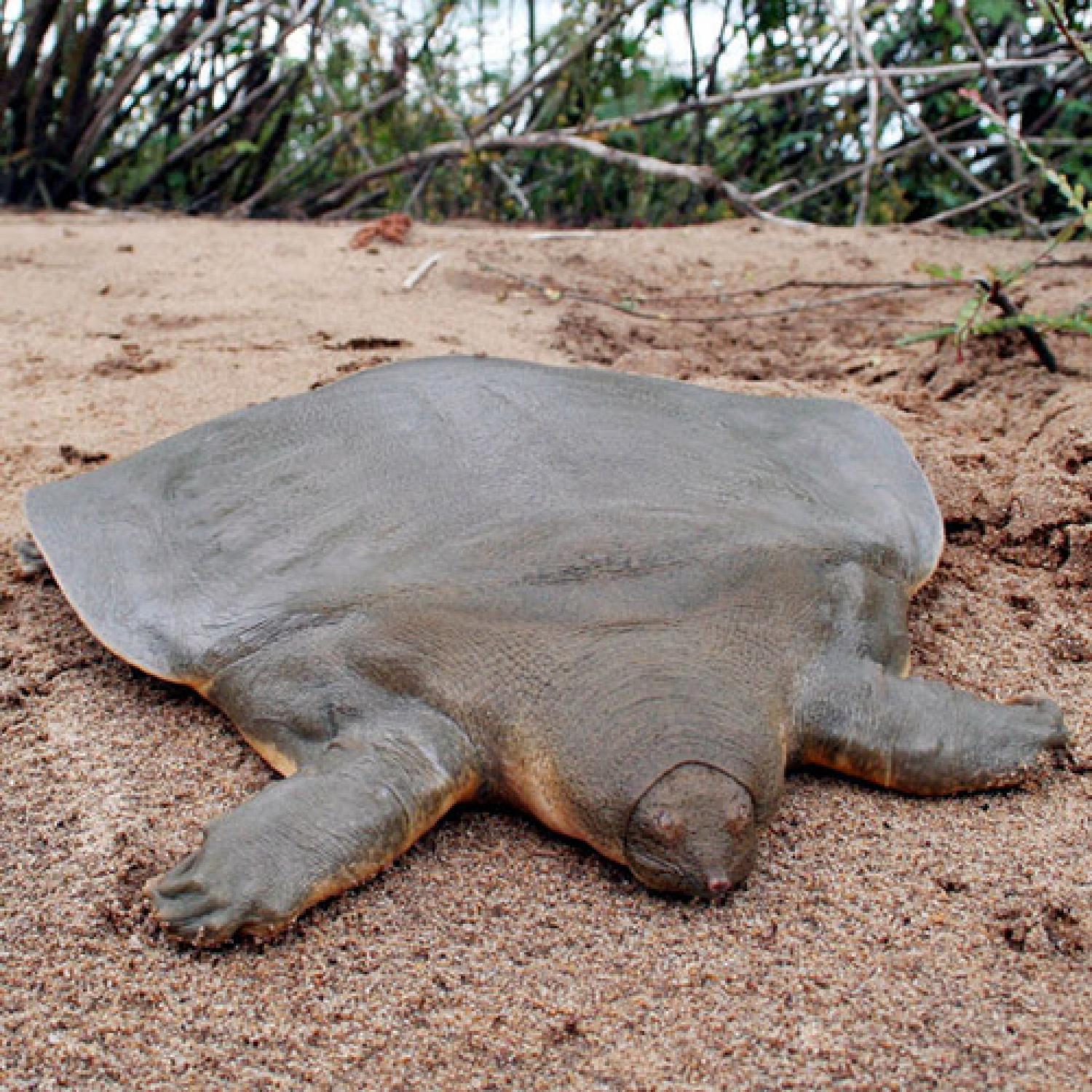Species of Thailand
Asian Giant softshell turtle
Pelochelys cantorii
John Edward Gray, 1864
In Thai: ตะพาบหัวกบ, dtapaab hua gob
Cantor's giant softshell turtle or Asian giant softshell turtle (Pelochelys cantorii) is a species of freshwater turtle. The turtle has a broad head and small eyes close to the tip of its snout. The carapace is smooth and olive-colored. Juveniles may have dark-spotted carapaces and heads, with yellow around the carapace.
Despite reports that the Cantor's giant softshell turtles can grow up to 6 ft (about 2 m) in length and is the world's largest extant freshwater turtle, this maximum size and title is murky at best. Apparently the largest specimen carapace length, 129 cm, known is considered suspect and the heaviest specimen known (weighing approximately 250 kg was actually a misidentified Yangtze giant softshell turtle. A more realistic range of carapace length for this species is reportedly 70 to 100 cm and it is one of about a half-dozen giant softshell turtles from three genera that reach exceptionally large sizes, i.e. in excess of 100 kg in mass. P. cantorii an ambush predator and primarily carnivorous, feeding on crustaceans, mollusks and fish (although some aquatic plants may also be eaten). The turtle spends 95% of its life buried and motionless, with only its eyes and mouth protruding from the sand. It surfaces only twice a day to take a breath, and lays 20–28 eggs (about 1.2 to 1.4 in in diameter) in February or March on riverbanks.
The turtle is named after Theodore Edward Cantor.
Distribution
The turtle is found primarily in inland, slow-moving, freshwater rivers and streams. Some evidence indicates its range extends to coastal areas, as well.
The turtle is found in eastern and southern India, Bangladesh, Burma, Thailand, Malaysia, Laos, Cambodia, Vietnam, eastern and southern China, Singapore (extirpated), the Philippines (Luzon and Mindanao), and Indonesia (Kalimantan, Java, and Sumatra).
The turtle is regarded as endangered, and has disappeared from much of its range. Prior to 2007, it was last seen in Cambodia in 2003. A 2007 survey of one area of the Mekong River in Cambodia found the turtle in abundance along a 48-km (30-mi) stretch of the river.
Taxonomy
Cantor's giant softshell turtle is not found in New Guinea, while the two other members of the genus Pelochelys, P. bibroni and P. signifera are both restricted to New Guinea.P. cantorii is relatively unstudied, and the current species may actually be composed of several taxa. One study from 1995 showed what was once thought to be P. cantorii in New Guinea was actually P. bibroni, and the earlier studies of P. cantorii only described populations further to the west.
Appearance
In the Philippines, a juvenile Cantor’s turtle known as “cagot" appeared and was captured by a fisherman along the Addalam River, Cabarroguis, Quirino, Isabela. In 2001, this turtle was sent to Chicago, and later confirmed to be an endangered turtle species.
Morphological differences on neural bone count has been noted among specimens found in the Philippines and mainland Asia.
This article uses material from Wikipedia released under the Creative Commons Attribution-Share-Alike Licence 3.0. Eventual photos shown in this page may or may not be from Wikipedia, please see the license details for photos in photo by-lines.
Scientific classification
- Kingdom
- Animalia
- Phylum
- Chordata
- Class
- Reptilia
- Order
- Testudines
- Family
- Trionychidae
- Genus
- Pelochelys
- Species
- Pelochelys cantorii
Common names
- German: Riesenweichschildkröte
- English:
- Asian giant soft-shelled turtle
- Cantor's giant softshell turtle
- Thai:
- ตะพาบหัวกบ, dtapaab hua gob
- ฝาออง, fa ong
- กริวลาย, greuw lai
Conservation status

Endangered (IUCN2.3)
Photos
Please help us review our species pages if wrong photos are used or any other details in the page is wrong. We can be reached via our contact us page.
Range Map

- Bang Lang National Park
- Bangkok Province
- Kaeng Krachan District, Phetchaburi
